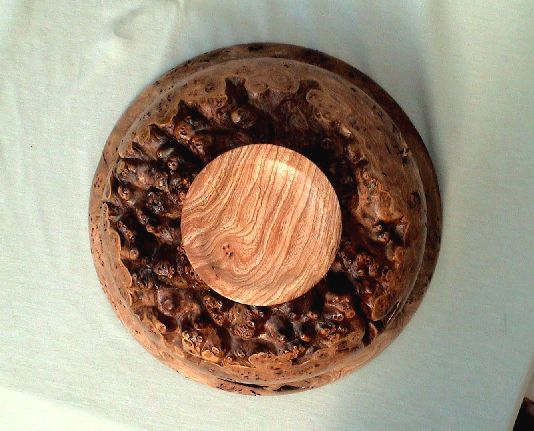Is there a difference between the wet in old wood and that in wood recently felled?
This is a follow on from the thread I put up about elm burrs. I've now separated out the two burrs on the log I collected - combination of hacking with the chain saw, the band saw and a hand saw! One is 300 x 250 x 150 and the other a bit smaller.
The surface wood is reading 25% with the core wood 34% with the moisture gauge.
Q1 On the basis that wood will move regardless of it's source of moisture as it dries, I presume I need to let these dry before turning, but that then presents a difficulty as to what I seal ?
Q2 I've not dealt with elm before and am surprised at how well coloured the wood is - is this because it is damp?
Q3 The turning I think I can cope with, but how do I finish the knobbly outside. It is the key feature really and needs to be done well? This surface is well weather, grey and has some 'feature' insect holes.
Many thanks for any help
Rob
This is a follow on from the thread I put up about elm burrs. I've now separated out the two burrs on the log I collected - combination of hacking with the chain saw, the band saw and a hand saw! One is 300 x 250 x 150 and the other a bit smaller.
The surface wood is reading 25% with the core wood 34% with the moisture gauge.
Q1 On the basis that wood will move regardless of it's source of moisture as it dries, I presume I need to let these dry before turning, but that then presents a difficulty as to what I seal ?
Q2 I've not dealt with elm before and am surprised at how well coloured the wood is - is this because it is damp?
Q3 The turning I think I can cope with, but how do I finish the knobbly outside. It is the key feature really and needs to be done well? This surface is well weather, grey and has some 'feature' insect holes.
Many thanks for any help
Rob


































